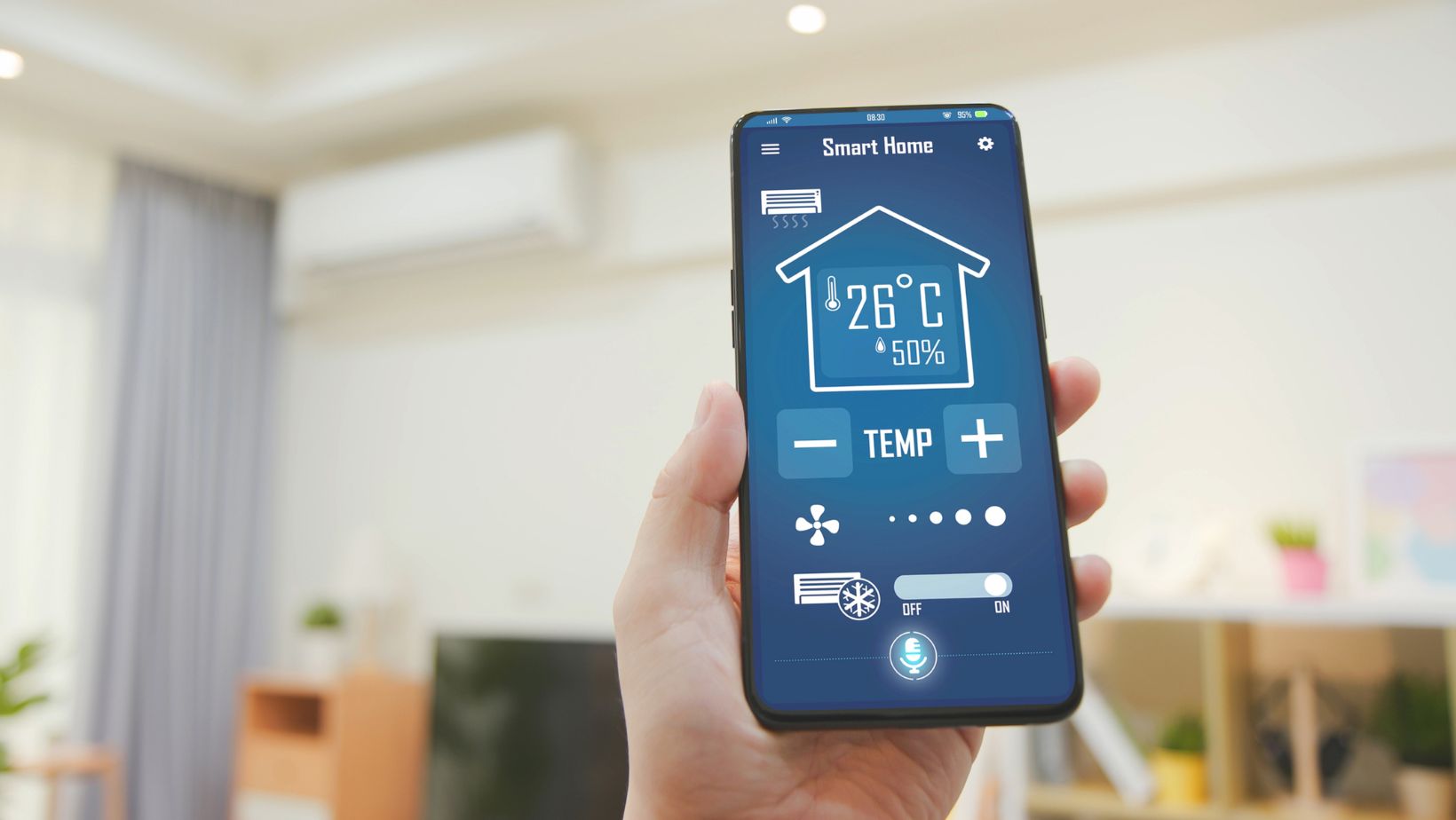
How to Choose Between Different Types of Lighting Control Systems
In today’s world of advanced technology, lighting has evolved far beyond the simple flip of a switch. Modern lighting control systems offer unprecedented levels of customization, energy efficiency, and convenience, making it easier for users to optimize their electricity usage and potentially lower costs, especially when considering factors like the aep ohio kwh rate. Whether you’re a homeowner looking to upgrade your living space or a business owner seeking to optimize your commercial environment, understanding the various types of lighting control systems is crucial. This comprehensive guide will walk you through the process of choosing the right lighting control system for your needs, with a focus on smart lighting control systems and their applications in both residential and commercial settings.
Understanding Lighting Control Systems
Before diving into the specifics, it’s essential to understand what lighting control systems are and why they’re becoming increasingly popular.
What Are Lighting Control Systems?
Lighting control systems are networks of devices used to manage lighting in a space. These systems can range from simple dimmer switches to complex, integrated networks that control multiple light sources across entire buildings or campuses. The primary goals of lighting control systems are to:
- Enhance user comfort and productivity
- Improve energy efficiency
- Comply with building codes and regulations
- Provide flexibility in lighting design
- Integrate with other building systems for enhanced functionality
The Rise of Smart Lighting Control Systems
Smart lighting control systems represent the cutting edge of lighting technology. These systems leverage the power of the Internet of Things (IoT) to offer unprecedented levels of control, automation, and integration. With smart lighting control systems, users can:
- Control lights remotely via smartphone apps
- Create custom lighting scenes for different activities or moods
- Automate lighting based on occupancy, time of day, or other factors
- Integrate lighting with other smart home or building management systems
- Monitor and analyze energy usage for improved efficiency
The versatility and efficiency of smart lighting control systems make them an attractive option for both residential and commercial applications.
Types of Lighting Control Systems
When choosing a lighting control system, it’s important to understand the different types available. Each type has its own strengths and is suited to different applications.
Manual Controls
The most basic form of lighting control, manual systems include:
- Standard on/off switches
- Dimmer switches
- Multi-way switching (e.g., three-way switches)
While simple, these systems can be effective for small spaces or where more complex control is unnecessary.
Occupancy and Vacancy Sensors
These sensors automatically control lights based on the presence or absence of people in a space. They’re particularly useful for:
- Bathrooms
- Storage areas
- Conference rooms
- Outdoor security lighting
Daylight Harvesting Systems
These systems use photosensors to detect ambient light levels and adjust artificial lighting accordingly. They’re ideal for spaces with significant natural light and can lead to substantial energy savings.
Time-Based Controls
Time-based systems use schedules to control lighting. They’re particularly useful for:
- Retail environments
- Office buildings
- Outdoor lighting
Networked Lighting Control Systems
These sophisticated systems connect multiple lighting devices to a central control system. They offer the most flexibility and are often a key component of smart lighting control systems.
Touch Control LED Lighting Systems
A touch control LED lighting system offers intuitive control over LED lights. Users can adjust brightness, color temperature, and sometimes even color with simple touch gestures. These systems are popular in modern homes and boutique commercial spaces.
Smart Lighting Control Systems: A Closer Look
As mentioned earlier, smart lighting control systems represent the most advanced option available. Let’s delve deeper into what makes these systems “smart” and how they can benefit various environments.
Key Features of Smart Lighting Control Systems
- Remote Control: Access and adjust your lighting from anywhere using a smartphone app or web interface.
- Automation: Set schedules, create rules, and let your lighting respond automatically to various triggers.
- Integration: Connect your lighting with other smart systems like thermostats, security systems, and voice assistants.
- Energy Monitoring: Track your energy usage in real-time and receive suggestions for improving efficiency.
- Adaptive Learning: Some advanced smart lighting control systems can learn from your habits and adjust automatically over time.
- Circadian Rhythm Support: Adjust color temperature throughout the day to support natural sleep-wake cycles.
Benefits of Smart Lighting Control Systems
- Energy Efficiency: By automating lights and optimizing usage, smart lighting control systems can significantly reduce energy consumption.
- Convenience: Control all your lighting from a single interface, whether you’re at home or away.
- Customization: Create the perfect ambiance for any occasion with customizable scenes and color options.
- Improved Security: Use lighting to simulate occupancy when you’re away, deterring potential intruders.
- Health and Wellness: Support your circadian rhythm with adaptive lighting that mimics natural light patterns.
- Future-Proofing: Many smart lighting control systems are designed to be upgradable, ensuring your investment stays current with technological advancements.
Commercial Lighting Control Systems
While smart lighting control systems can be used in both residential and commercial settings, commercial environments often have unique needs that require specialized solutions.
Features of Commercial Lighting Control Systems
- Scalability: Commercial systems need to handle large numbers of light fixtures across multiple zones or buildings.
- Advanced Scheduling: Complex scheduling capabilities to match business hours, special events, and seasonal changes.
- Emergency Lighting Integration: Seamless integration with emergency lighting systems for safety compliance.
- Daylight Harvesting: Sophisticated sensors and controls to maximize the use of natural light in large spaces.
- Reporting and Analytics: Detailed energy usage reports and analytics for informed decision-making.
- Multi-User Access: Ability to set different access levels for various users, from facility managers to employees.
Applications of Commercial Lighting Control Systems
- Office Buildings: Create productive work environments while minimizing energy waste.
- Retail Stores: Enhance product displays and create inviting atmospheres for shoppers.
- Healthcare Facilities: Support patient well-being and staff productivity with adaptive lighting.
- Educational Institutions: Improve learning environments and reduce operating costs.
- Industrial Spaces: Ensure proper lighting for safety and productivity in warehouses and manufacturing plants.
- Hospitality: Create the right ambiance in hotels, restaurants, and event spaces.
How to Choose the Right Lighting Control System
Selecting the appropriate lighting control system depends on various factors. Here’s a step-by-step guide to help you make the right choice:
Assess Your Needs
- What type of space are you lighting? (Residential, commercial, industrial, etc.)
- How large is the area you need to control?
- What are your primary goals? (Energy savings, convenience, aesthetics, etc.)
Consider Your Budget
- Initial installation costs
- Ongoing maintenance expenses
- Potential energy savings
Evaluate the Features You Need
- Remote control capabilities
- Automation options
- Integration with other systems
- Energy monitoring and reporting
Think About Future Needs
- Is the system scalable?
- Can it be easily updated or expanded?
- Will it integrate with future smart home or building management systems?
Check Compatibility
- Will the system work with your existing fixtures and bulbs?
- Is it compatible with other smart devices you already own?
Consider Ease of Use
- How user-friendly is the interface?
- Will all users be able to operate the system effectively?
Look at Energy Efficiency
- Does the system offer features like daylight harvesting or occupancy sensing?
- How much energy can you expect to save?
Assess Installation Requirements
- Can you install the system yourself, or will you need professional installation?
- How disruptive will the installation process be to your space?
Evaluating Support and Warranty
- What kind of customer support is available?
- What does the warranty cover, and for how long?
The Future of Lighting Control Systems
As technology continues to advance, we can expect lighting control systems to become even more sophisticated and integrated into our daily lives.

Some trends to watch for include:
- Increased AI Integration: Lighting systems that learn and adapt to our behaviors without explicit programming.
- Health-Focused Lighting: Systems that go beyond circadian rhythm support to actively promote well-being.
- Enhanced Energy Management: More granular control and predictive analytics for optimal energy use.
- Seamless IoT Integration: Lighting systems that communicate effortlessly with a wide range of smart devices and systems.
- Sustainable Materials: Development of eco-friendly components for more sustainable lighting solutions.
Conclusion
Choosing the right lighting control system can significantly impact the comfort, efficiency, and functionality of your space. Whether you opt for a sophisticated smart lighting control system or a more traditional setup, the key is to carefully assess your needs and choose a solution that offers the right balance of features, usability, and cost-effectiveness.
For many users, smart lighting control systems offer the best combination of convenience, efficiency, and future-proofing. However, the right choice will always depend on your specific circumstances and goals.
As lighting technology continues to evolve, staying informed about the latest developments in smart lighting control systems and other lighting technologies will help you make the best decisions for your home or business. With the right lighting control system in place, you can create spaces that are not just well-lit, but truly responsive to the needs and preferences of those who use them.






